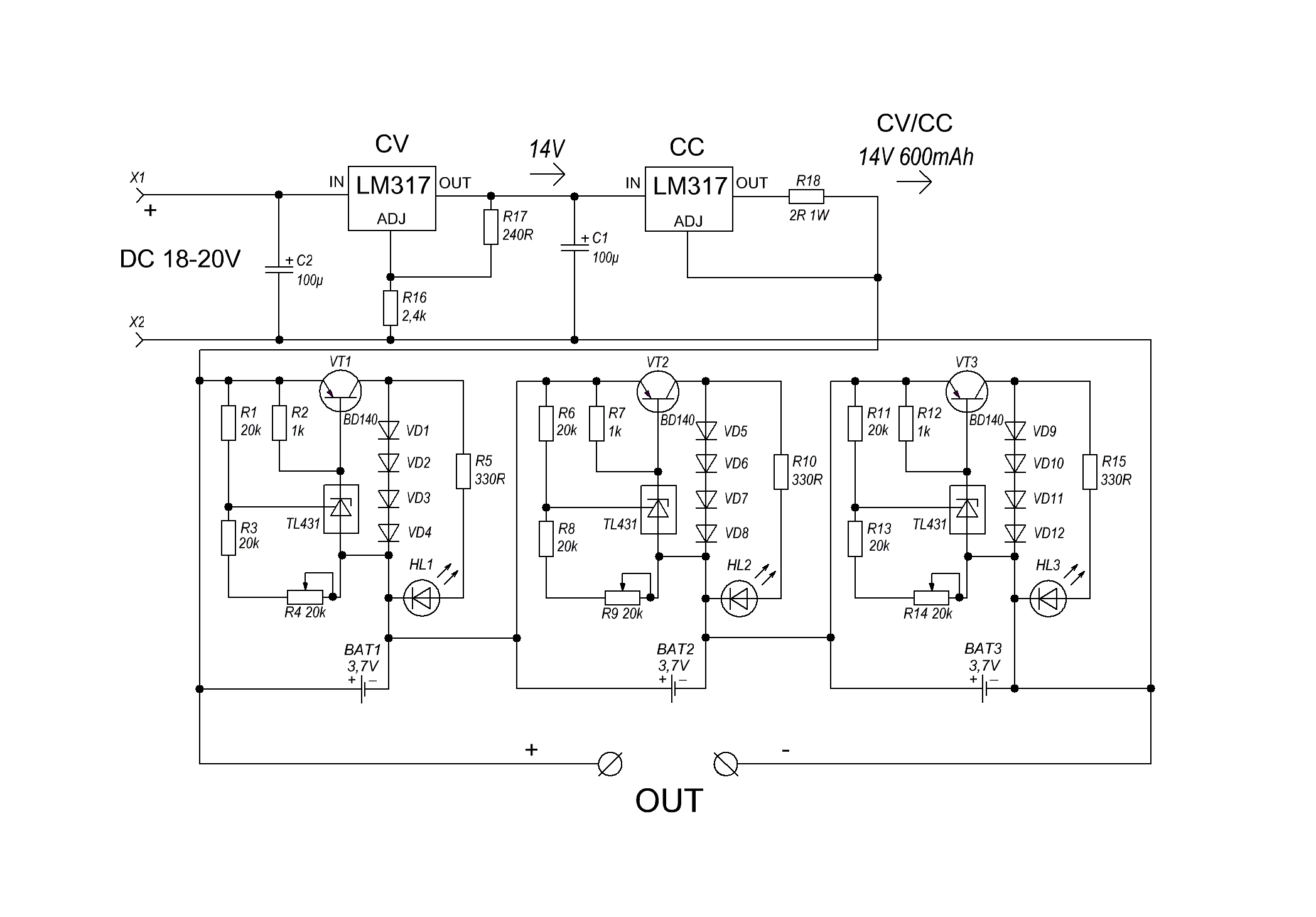Battery Management System is also known as BMS
Contents
Lithium-ion batteries are now mega-popular. They have found wide application in portable electronics.But unlike other types of batteries, for example, lead-acid or nickel batteries, lithium-ion batteries are very demanding for the charger parameters.
If you don’t control the process of charging and discharging of such batteries, they will fail soon.The banks can swell and even explode from overcharging, and a deep discharge can cause of battery failure.
The ideal charger for lithium-ion batteries should have a stabilizing unit for voltage and current and also a voltage balancing system for banks.The voltage of the fully charged can of lithium-ion the battery is 4.2 Volts.
As soon as the bank has reached this voltage, the charging process should stop.Today we will examine a circuit that will allow charging lithium-ion cans connected in series, as well as balancing them in the process of charging.This circuit is not only simple, but also very effective.
BMS Circuit and Working

BMS Circuit with Adjustable Voltage

The coefficient of efficiency here isn’t very important, as the charger is powered by the network. Link to the detailed article about this circuit you will find the description.
In fact, this is a Zener diode, which opens when a certain voltage is reached on the battery and extinguishes everything unnecessary. The circuit consists of a regulated Zener the diode on the basis of the chip TL431. At a given voltage, a power transistor opens. With the diodes in the collector circuit, it forms the equivalent of the load.That is, the excess power will be dissipated as heat on these elements, so the transistor may need a heat sink.
In my version, the transistor BD140 is used. It isn’t particularly critical; you can any PNP transistor with a collector current above 1 Ampere. On 1 board I collected 3 similar circuits. This assembly will help to charge 3 lithium-ion banks at once.
In theory, the number of assemblies can be anything. The board has a tuning resistor to adjust the circuit for the desired cut out voltage.The LED indicator on the collector circuit of the transistor will glow when the transistor is open, thereby indicating that the charging process is complete. In my case, 5 mm LEDs are used. You can choose any color, but desirable to use same for all.
Adjustment of the circuit is a simple. Set the voltage in the region of 4.2 Volts on laboratory power supply.Then connect the board to it and slowly rotate the trimmer until the LED illuminates. We adjust all balancing units so that the current consumption or balancing current for all was the same.In my case, it is 160-180 milliamperes. For the most accurate setting, I advise you to use multi-turn trimmer resistors. Naturally, there are programs for calculating the chip of the TL431. But in any case, the resistors have a spread, so all the units require an individual adjustment.By the way, the microcircuit TL431 can be found on the boards of computer power supplies.
The voltage from the power supply unit is stabilized by the linear stabilizer LM317, on the second chip the current stabilization the unit is realized, and then comes the balancing board. The charge current, as already said, is stabilized and depends on the value of the resistor R18.
The calculation can be done using specialized calculators for the LM317 chip.Such charging will not be inferior to good industrial chargers, except for heat generation.

The experiments showed that the balancing circuit works perfectly.The charging process is completed at a specified voltage of 4.2 Volts.
In general, I recommend this circuit.By the way, the circuit can also be used to balance the batteries separately from the charger.
Watch Video
Credit: Kasyan TV
If you have any queries feel free to connect us on social handles Facebook